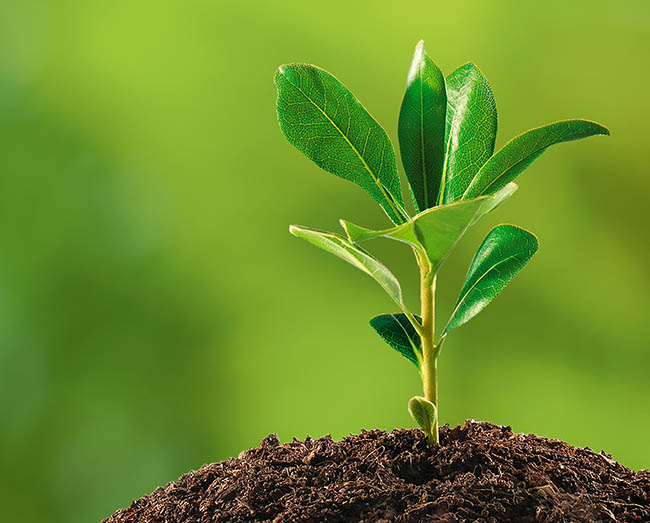Caring for Small, Young Trees
The first ten years of life are crucial to the long-term health of a mature tree. Spending the time, effort, and money to help ensure your small, young trees are properly cared for will go a long way toward keeping future maintenance costs down and real-estate value high. While some trees, such as understory trees, are naturally small and have their own needs, looking after young trees generally follows a few simple rules.

Water Deeply
Watering deeply(10-15 gallons/ diameter inch/ watering) helps encourage the growth of strong roots deep underground, rather than fragile surface roots which are easy to tear up or otherwise susceptible to weather event damage. The soil should be moist but not wet 4-to-6 inches down. Laying down a layer of mulch will help to conserve the moisture in the soil. Lay the mulch down in a 3-to-5-inch layer and extend it between one and two feet from the trunk, keeping it off the root flare.
Trees will require slightly different levels of water depending on where they are in their site. Species tolerances, site, soil and location are to be considered. With this knowledge in hand, the first few years should be spent watering the tree as per above, ensuring that a proper root system grows.
Feed Carefully
Trees require feeding, Good food is slow release carbon based 3-1-1. Soil injected to ensure proper dosage, maximize dispersal and aerify soil in the process. Everything needs to eat and trees are no different. Weeds and other plant life compete with young trees for water and nutrients. Keeping the base of a tree free from other plants this will help it make use of all the nutrients available and additionally acts as a barrier from weed wackers/mowers.
Pruning Trees
There are 2 types of health in trees; Physical and structural. Physical has been spoken about, structural is pruning the tree. Trees do not grow perfectly, that is why we prune them to insure strength and vigor by removing imperfections that threaten both the structure and health of the tree. Pruning removes those imperfections such as; inclusions, bifurcations, competing, interfering, etc… limbs. In addition an experienced, educated, and well trained Certified Arborist can predict what limbs need to be removed to allow for growth in the future around/above structures, codes/ordinances and other landscape plants.
Always Protect Young Trees; Tree Doctor
Finally if or when your tree becomes stressed or sick or just have questions, Having the confidence in choosing, the Arborist that can diagnose/treat or even set expectations. Advanced Tree & Shrub Care Inc., go no further we are the leaders in practicing Arboriculture, we have the answers and been successful at it for 35 years.
For more information on looking after young, small trees and helping them grow to be valuable strong, mature trees, contact us at Advanced Tree & Shrub Care.
